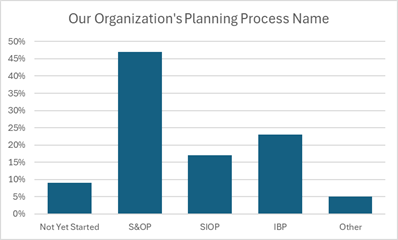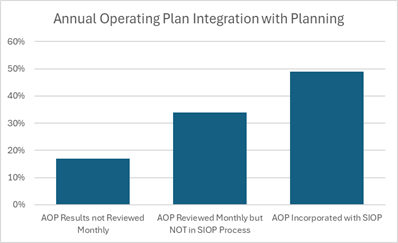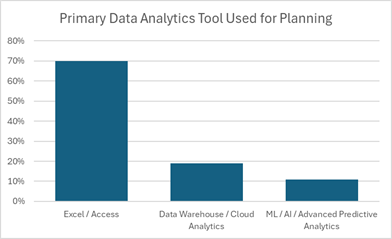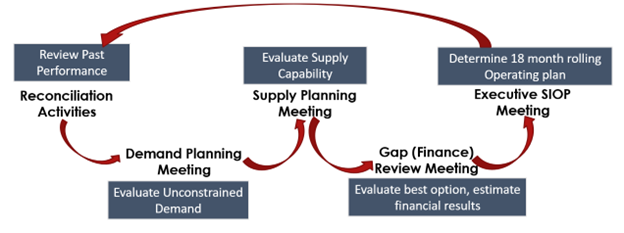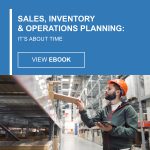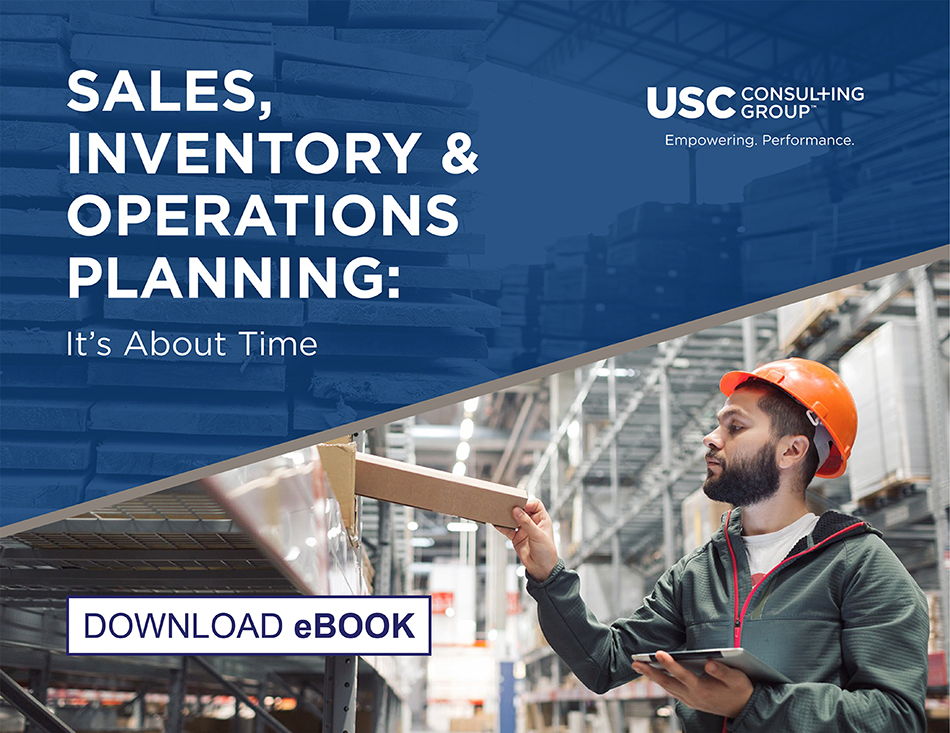-
Subscribe to Blog:
SEARCH THE BLOG
CATEGORIES
- Aerospace
- Asset Maintenance
- Automotive
- Blog
- Building Products
- Case Studies
- Chemical Processing
- Consulting
- Food & Beverage
- Forestry Products
- Hospitals & Healthcare
- Knowledge Transfer
- Lean Manufacturing
- Life Sciences
- Logistics
- Manufacturing
- Material Utilization
- Metals
- Mining
- News
- Office Politics
- Oil & Gas
- Plastics
- Private Equity
- Process Improvement
- Project Management
- Spend Management
- Supply Chain
- Uncategorized
- Utilities
- Whitepapers
BLOG ARCHIVES
- June 2025 (4)
- May 2025 (1)
- April 2025 (1)
- March 2025 (1)
- February 2025 (4)
- January 2025 (4)
- December 2024 (4)
- November 2024 (2)
- October 2024 (6)
- September 2024 (5)
- August 2024 (5)
- July 2024 (6)
- June 2024 (3)
- May 2024 (3)
- April 2024 (4)
- March 2024 (3)
- February 2024 (4)
- January 2024 (5)
- December 2023 (2)
- November 2023 (1)
- October 2023 (6)
- September 2023 (3)
- August 2023 (4)
- July 2023 (2)
- June 2023 (3)
- May 2023 (7)
- April 2023 (3)
- March 2023 (3)
- February 2023 (5)
- January 2023 (6)
- December 2022 (2)
- November 2022 (5)
- October 2022 (5)
- September 2022 (5)
- August 2022 (6)
- July 2022 (3)
- June 2022 (4)
- May 2022 (5)
- April 2022 (3)
- March 2022 (5)
- February 2022 (4)
- January 2022 (7)
- December 2021 (3)
- November 2021 (5)
- October 2021 (3)
- September 2021 (2)
- August 2021 (6)
- July 2021 (2)
- June 2021 (10)
- May 2021 (4)
- April 2021 (5)
- March 2021 (5)
- February 2021 (3)
- January 2021 (4)
- December 2020 (3)
- November 2020 (3)
- October 2020 (3)
- September 2020 (3)
- August 2020 (4)
- July 2020 (3)
- June 2020 (5)
- May 2020 (3)
- April 2020 (3)
- March 2020 (4)
- February 2020 (4)
- January 2020 (4)
- December 2019 (3)
- November 2019 (2)
- October 2019 (4)
- September 2019 (2)
- August 2019 (4)
- July 2019 (3)
- June 2019 (4)
- May 2019 (2)
- April 2019 (4)
- March 2019 (4)
- February 2019 (5)
- January 2019 (5)
- December 2018 (2)
- November 2018 (2)
- October 2018 (5)
- September 2018 (4)
- August 2018 (3)
- July 2018 (2)
- June 2018 (4)
- May 2018 (3)
- April 2018 (3)
- March 2018 (2)
- February 2018 (2)
- January 2018 (1)
- December 2017 (1)
- November 2017 (2)
- October 2017 (2)
- September 2017 (1)
- August 2017 (2)
- July 2017 (2)
- June 2017 (1)
- April 2017 (3)
- March 2017 (3)
- February 2017 (2)
- January 2017 (2)
- December 2016 (2)
- November 2016 (4)
- October 2016 (4)
- September 2016 (3)
- August 2016 (6)
- July 2016 (4)
- June 2016 (4)
- May 2016 (1)
- April 2016 (3)
- March 2016 (4)
- February 2016 (2)
- January 2016 (4)
- December 2015 (3)
- November 2015 (3)
- October 2015 (1)
- September 2015 (1)
- August 2015 (4)
- July 2015 (6)
- June 2015 (4)
- May 2015 (7)
- April 2015 (6)
- March 2015 (6)
- February 2015 (4)
- January 2015 (3)
CONNECT WITH US
Tag Archives: SIOP
There are a lot of terms used by organizations to describe their mid to long range strategic planning discipline. Whether your organization calls it Integrated Business Planning (IBP), Sales and Operations Planning (S&OP), Sales, Inventory and Operations Planning (SIOP) or something else, the key message is that abbreviations are not important – results are. Strong strategic planning discipline orchestrates sales plans, operations constraints, and financial objectives while giving guidance to short-term scheduling for execution. At USC, we call this discipline SIOP due to the strategic importance of inventory to smooth supply and demand fluctuations to maintain customer service levels.
Survey Says!
Businesses find S&OP beneficial because it helps balance supply and demand, it improves communication between sales and other departments, leads to better decision-making with everyone on the same page, and it ultimately results in better efficiency. Most organizations refer to their planning process as S&OP, but we think it’s incomplete. Inventory needs to be part of this process to unlock greater levels of operational efficiency and customer service rates.
Most companies have less than five years of experience utilizing a SIOP discipline and significantly, fewer than 50% of all companies integrate financial objectives into their monthly planning process. The result is the organization’s annual plans are disconnected from the monthly “replanning” SIOP process. Managers are typically held accountable to their annual plans which are increasingly out of date as the year progresses and better plans are known resulting in sub-optimal decision making based on old assumptions.
Furthermore, since most companies rely on static models such as Excel and Access to as their primary analytical tools, the planning process can be labor intensive, time consuming and more prone to human error. Integrating decision support systems with operations data, procurement data, inventory data, and customer demand improves simulation and scenario analysis capabilities. Integrating with advanced predictive analytics can further augment planning knowledge.
Sales, Inventory and Operations Planning
We tell our clients that SIOP is making sure you’re having the right conversations about the right things at the right time.
Sales, Inventory, and Operations Planning is a holistic process that integrates customer-focused demand plans with production, sourcing and inventory plans and results in improved tactical and long-term business decision making capability.
Keys to Implementing a Successful SIOP Process
- Everyone is on board. It’s simply not going to work if it’s not interdepartmental. You need everyone – Sales & Marketing, Operations, Procurement and Logistics, Planning, Product Development, Finance, IT, and the C-Suite working in lock step from the same plan.
- Planning cycles should be monthly. This isn’t a one-and-done process. Once you get on the SIOP treadmill, you don’t ever get off. We advise a rolling 18-month period, updated monthly. This ensures the re-planning process is looking out beyond the current budget year and for strategic planning.
- People and Process Discipline is a must. A good SIOP process includes a SIOP monthly process schedule/calendar of key events, RACIs, mutually agreed upon KPIs, actual vs forecasted reporting scorecards, assumptions and occurrences reporting, decisions made with action item follow up.
But Why the Added Focus on Inventory?
Inventory tells a story about a business’ operational efficiency. Inventory accounts pool the collective decisions and market forces affecting the company, telling stories of sales forecasting accuracy, manufacturing efficiency, planning effectiveness, supply chain disruptions, and quality control. Lean inventories reveal robust planning systems and culture, integrated ERP systems, and good governance. Excess inventories can be a short-term benefit to sustain high customer service levels during times of uncertainty, however they come with high obsolescence and carrying costs. Inventory is a strategic lever to smooth operations, procurement, and sales fluctuations. The right level of inventory is different for each company, and changes based on current consumer demand, supply chain disruptions, and strategic decisions.
Benefits of SIOP
- Gets departments in sync. The SIOP process helps to determine whether
your original financial expectations / budget, and your current sales plan and operations plan are in sync with each other. Updating your forecast monthly will show you where problems lie and provide action plans to address shortfalls. - Ensures that the plans are realistic. The key stakeholders from each department participate in formulating the SIOP plan. Since all assumptions are transparent throughout the process, each department has more time to evaluate its resources and capabilities in the context of the most recent company-wide plan. The result is a solid set of department plans that are based on latest expectations and known capabilities.
- Effectively manages change. Many industries have faced significant planning challenges in recent years. Having an agile and timely planning process helps decision makers roll with the punches. With SIOP, your business can make holistic, controlled responses to changes instead of making knee-jerk, departmental centric reactions.
- Measures performance. Our customized approach to KPIs ensures that success measurements identify where the organization is challenged and where to focus on improvement.
- Builds teamwork. SIOP gives each department an opportunity to participate in the overall planning process.
Interested to learn more about how adding inventory to your planning can make you more efficient? For more information on how SIOP can help your business read our eBook, “Sales, Inventory and Operations Planning: It’s About Time.”
*This article is written by USC Consulting Group’s Supply Chain Practice Leader, David Newman.
The rise in food prices is all over the news these days. The USDA and the Consumer Price Index tell us that, in 2023, grocery store purchases were up 5% from the previous year, while eating out cost an average of 7.1% more. This year, those costs are set to bump up another 1.3%. But, if you work in food manufacturing, (or buy groceries for your household) you don’t need the government to tell you those prices are rising.
It’s the trickle-down effect. Challenges facing food manufacturers mean higher production costs, which are ultimately influencing everyone’s grocery bills.
Here’s why, and what food manufacturers can do to save money on the front end to stop that trickle down.
Challenges affecting food prices
Some of the issues food manufacturers are navigating through that can ultimately show up in prices at the grocery store include:
Supply chain disruptions. Whether it’s geopolitical tensions, droughts, wildfires, strikes, or other events, it can disrupt the supply of raw materials food manufacturers use to get the job done. This can and does create delays, backlogs and other costly challenges.
Price inflation. Before price increases hit the grocery store shelves, the rising cost of things like grain, meat and dairy affects manufacturers who use those raw materials to make their goods.
Shipping costs. Rising fuel prices affect how much it costs to get those raw materials to food manufacturers, whether it’s coming from across town or across the world.
Labor shortages. The continuing battle to hire and train good people, and retain the ones you have, contributes to labor costs at the plant, which contributes to rising costs for the end user.
Evolving demand. Consumers are ever changing in their preferences and expectations. People are increasingly demanding sustainability, ethical sourcing, friendly practices like free-ranging and more. And dietary trends shift too, with plant-based alternatives growing in popularity on the one hand and minimally-processed meals on the other. This makes it difficult for manufacturers to forecast to accommodate the demand.
Regulations. Compliance with FDA regulations can be complex at best and lead to inefficiency and higher costs for manufacturers at worst. It’s especially prevalent in yield, when manufacturers are trying to hit the “wiggle room” the government allows between what the package label says and how much product is actually in the package. Not wanting to be out of compliance, manufacturers often overfill packaging to reach that sweet spot, but it means they’re actually giving away product… and profits.
All of these challenges can have a direct impact on manufacturing costs and will inevitably trickle down to their customers. It boils down to:
Higher production costs. This is by no means unique to the food manufacturing industry. Higher production costs on things like raw materials, labor, transportation and more mean higher costs to the customer – that’s a fact of life for most every business.
Supply and demand uncertainty. Supply chain disruption leads to shortages, which cause prices to rise.
How food manufacturers can tackle these challenges
In the short term, agility is key. But strategic planning, process improvements, and a focus on efficiency can shore up food manufacturers for the long run.
Sales, Inventory & Operations Planning which we call SIOP, takes the sales and operations planning (S&OP) process that most manufacturers use and adds inventory to the mix. At USCCG, we find inventory is often left out of the planning process, but it can be as important of a variable and a strategic tool. Following this methodology helps manufacturers eliminate waste, increase efficiencies and achieve an optimal level between not enough and too much.
It’s also an unparalleled tool for inventory management, which is a tricky business today given all of the challenges this industry is facing.
If you would like to learn more about SIOP, download our (free) eBook, “Sales, Inventory & Operations Planning: It’s About Time.”
Process improvements. One way streamlining and refocusing your processes can help manufacturers now is in the area of yield. Getting a handle on yield — improving processes so you’re not giving away product — can save millions of dollars. To learn more about how one food distributor saved $2.3 million per year by improving their yield, read “Food Distributor Masters Management by the Numbers to Improve Yield.” And speaking of management by the numbers…
Implement a Solid Management Operations System. Many manufacturers, whether food or other industries, tend to manage on the basis of what has worked in the past, a gut feeling by seasoned managers, and other methods. At USCCG, we like hard numbers, streamlined processes and everyone doing the same job the same way. And about that…
Focus on training. It’s crucial to have all shifts, all facilities and all employees working in tandem, doing the same job the same way. It’s how you create the proverbial well-oiled machine.
None of these tactics will stop challenges from happening, but they can and do make your operations more efficient, and in turn, save you money. Not only will it improve your bottom line, but you might just be able to trickle the savings down to your customers, too.
All roads are leading most industries to adopt increasingly more sustainable practices. The pressure for manufacturers to go green is growing in the face of climate change, supply chain challenges and especially consumer preferences.
A report from the Roundup, “Environmentally Conscious Consumer Statistics,” paints a pretty clear picture.
- Products marketed as sustainable grew 2.7x faster than those that were not.
- 78% of consumers feel that sustainability is important.
- The sale of carbon labeled products (such as those with 1% For the Planet or Climate Neutral Certification) doubled in one year, reaching $3.4 billion in 2021.
- 62% of people say they “always or often” seek products to purchase because they are sustainable, which is up from just 27% in 2021.
Consumers are opting for products that are sustainable, but that’s not the only headline for manufacturers. Because, it’s not just products. It’s the companies, too. Some 29% of consumers said they are “often or always” influenced by a company’s commitment to adopting more sustainable practices.
Sustainability challenges: It’s not easy being green
Many in the manufacturing industry are undoubtedly feeling some kinship to Kermit the Frog these days. Despite the pressure to adopt more sustainable practices, as the Muppet so famously lamented: “It’s not easy being green.”
It’s all well and good to work toward shoring up the environment (and we need to) but it’s a challenging lift for manufacturers. Some obstacles include:
High upfront costs. New technologies, processes and materials come at a price. It’s especially tough for manufacturers in industries like food and beverage, which has razor-thin margins.
Long wait for return-on-investment. ROI from major expenses can take years to come to fruition.
Supply chain challenges. Even if your company has shifted to more sustainable practices, what about your suppliers?
Skilled labor shortage. It’s difficult enough to find warm bodies to work on the line. But new technologies come with new skills requirements.
Opportunities are emerging
At USC Consulting Group, we help companies look for the opportunities within challenging situations. We always find the silver linings. Here are a few:
Cost reduction. Yes, there are upfront costs. But sustainable practices can lead to reduced energy and water consumption, the possibility of lower regulatory compliance costs, and lower materials costs by using recycled materials.
New partners, suppliers and revenue streams. The sustainable marketplace is an ecosystem all its own. It’s possible to find new partners, customers and even suppliers.
Attract and retain top talent. Yes, there is a labor shortage. But the companies with strong sustainable practices are attracting the best people out there. Companies that care for the environment also find their employees are more engaged and involved.
Governmental tax breaks. The government is committed to rewarding companies for adopting more sustainable practices with tax breaks and other financial incentives.
Strategies for manufacturers
One of the best ways to adopt more sustainable practices is to first look in the mirror. It’s not necessarily about investing in new technologies and turning the world upside down. First, look at your processes and operating systems. You’ll likely find efficiencies you didn’t even know were there. Places to start:
Minimizing waste. Lean Six Sigma methodologies can find hidden wastes and lead to more efficient operations. Not only will it save you considerable money, but minimizing waste is a key principle in sustainability. That’s a win-win.
Operations improvements. How efficient are your operations? A solid management operations system, which is a structured approach to your operations, creates much greater efficiency. The best MOS focus on processes, systems, roles and structures to map out how the job gets done, and by whom. Learn more about it in our short video, Stop the Firefighting Mentality to Improve Your Bottom Line.
Sales, inventory and operations planning. You’ve heard of S&OP. We added the “I.” We find inventory to be a key piece of the operations puzzle. When doing sales forecasting and planning for demand and supply, adding inventory elevates the process a notch. It makes inventory a strategic tool. Learn more about it in our free eBook, “Sales, Inventory and Operations Planning: It’s About Time.”
Training. About that skilled labor shortage. A way to combat that is by training and upskilling your people. And solid training for not just employees on the line but managers, too, will get everyone on the same page, creating greater efficiency organization-wide.
By moving toward more sustainable practices, manufacturers can ultimately reduce costs, find greater efficiencies, attract both consumers and employees and help the planet in the process. But it’s not easy. At USC Consulting Group, we’re the experts on helping companies become more efficient, effective and profitable. With more than 55 years behind us, we’ve seen trends come and go. The key is turning challenges into opportunities. Get in touch to find out more.
How’s your supply chain running these days? If you’re like most manufacturers, you’re still experiencing challenges. Big challenges. The pandemic threw the worldwide supply chain into chaos and it hasn’t yet recovered, but the truth is, there have always been supply chain issues bedeviling the industry. The pandemic just exacerbated what already had the potential to go wrong and uncovered new problems lurking just below the surface.
Just-in-time strategies, which were (and continue to be) popular methods of having just the right amount of inventory on hand at any given time, left manufacturers vulnerable to supply chain disruptions. The increasing complexity of global supply chains didn’t help the situation, nor did the pervasive lack of visibility into supply chains themselves.
What are manufacturers facing this year in terms of their supply chain? Let’s take a look at these issues, and examine some ways USC can help.
Manufacturers supply chain challenges for 2024
Materials shortages. Global instability, the lingering effects of the pandemic and other factors are leading to shortages of raw materials and components. Production delays, increased costs and unhappy customers are the result. And speaking of costs…
Rising freight costs. As fuel prices ride the same roller coaster we’re all seeing at the gas pump, and labor shortages and ongoing congestion at ports collide, it means costs to get those components and materials are going up, eating into your profits. And speaking of labor shortages…
Labor shortages. This problem is ongoing, and we have to say, it’s one thing that wasn’t caused by the pandemic. Manufacturing workers are aging and retiring, and there isn’t a large pipeline of younger people with the skills to replace them. It means reduced output and productivity, dwindling motivation and drive, and the loss of institutional knowledge.
DRIP. It stands for data rich, information poor. When you’re talking about the supply chain, it means you need to use data to its fullest. Outdated inventory systems won’t cut it.
Tactics that can help
Diversifying supply chains. Having too many eggs in one basket has proven costly when that basket falls apart. Reliance on any one supplier, especially if that supplier is overseas, is becoming yesterday’s strategy that is just not working in today’s market.
Reshoring. Supply chain disruption, ongoing global instability, higher costs (including higher labor costs in China), increased lead times and more hassles are leading companies to reconsider foreign sources. Many are already doing it. Yahoo Finance reported in June 2023 that 80% of manufacturers are now considering or acting on reshoring some or all of their production. A couple of quick examples: General Motors invested $7 billion in production facilities in Michigan to not just manufacture electric vehicles but the batteries that power them. Intel invested $20 billion in a new semiconductor manufacturing plant in Ohio, and is investing $30 billion for a similar facility in Arizona. Some manufacturers are “nearshoring,” bringing production closer to home, from China to Mexico, say. Not only will this reduce lead times, improve quality control and leave companies less vulnerable to global unrest, it will also create jobs here at home.
SIOP. We laud this tactic often because it really does improve efficiency, but in the age of supply chain disruption, it’s crucial. Sales, Inventory and Operations Planning (SIOP) is a collaborative process that aligns all departments. It involves using inventory as a strategic tool, demand management and supply planning, giving you the ability to capture, analyze, integrate and interpret data to give you a strategic advantage.
Learn more about SIOP in our free eBook, Sales, Inventory and Operations Planning: It’s About Time.
Solid training. The labor shortage isn’t going away, and we’re finding that many manufacturers are investing in training, ensuring that everyone is doing the job the same way, with rock-solid operating procedures. It’s a powerful way to keep institutional knowledge within your facilities, instead of losing it when people retire.
At USC Consulting Group, we have over 55 years of experience helping manufacturers ramp up their efficiency, production and operations. It’s especially crucial to be firing on all cylinders during challenging times… and we’re in them, right now. Give us a call and let’s talk about how we can help.
Last year, the London-based Collins Dictionary named “permacrisis” as the word of the year. It means an extended period of instability caused by an onslaught of seemingly never-ending crises — wildfires, pandemics, hurricanes, floods, inflation, air quality alerts, the highest heat ever recorded in some regions of the world, economic instability, wars… the list goes on. Sound familiar? You name it, we’ve all lived through it. And it shows no signs of slowing down.
In the immortal words of Gilda Radner on Saturday Night Live: It’s always something.
The way we see it here at USC Consulting Group, it IS always something. That’s called life. While the world may be going through an unusually rocky stretch, there is no perfect time to be running your business. Whether it’s external crises like the ones we’ve described, or internal upheavals like layoffs, mergers, unforeseen difficulties or the myriad hiccups that can occur, things are going to happen. When they do, companies can thrive, not just survive, with a mix of focusing on process improvements and operational excellence, optimizing your supply chain, and implementing standard operating procedures, along with a dash of the old-fashioned notion that “this too shall pass.”
Here are a few tactics for making sure you’re on solid footing, even during the rockiest of times.
Process improvements
The goal is operational excellence, right? But is that ever truly achievable? Yes, but it can also be a moving target. It means continuous improvements to processes, becoming as efficient as possible. We find that it’s about eliminating bottlenecks, waste and other snags that can impede productivity. Getting the right people in the right jobs and empowering them to get that job done. Developing standards and key process indicators that will tell you when you’re on target and when you aren’t, and using data to “manage by the numbers.”
Optimizing the supply chain: Don’t DRIP!
What’s DRIP? It’s a popular acronym when talking about supply chain. It stands for data rich, information poor. The fragility of the supply chain, no matter the industry you’re in, has become crystal clear in recent years. Optimizing your supply chain needs to be top of mind to make sure you don’t get caught short, and as DRIP suggests, it starts with making sure you’re using data to its fullest. Outdated inventory systems can impede that. Supply, Inventory and Operations Planning (SIOP) is a method we here at USC utilizes that emphasizes inventory as a strategic tool to allow businesses to get a better look at their operations and formulate superior strategy decisions.
SIOP gives you the ability to capture, analyze, integrate and interpret high-quality data, which is the key to staying ahead of the market. The aim is to achieve process automation and glean predictive analytics, which give you a strategic advantage… so you don’t DRIP.
Learn more about SIOP in this free eBook
Standard operating procedures (SOPs)
Much is being written in the news lately concerning “institutional knowledge,” and how the loss of it can be devastating to companies. What is it? It’s what’s NOT in your training manual. It’s what the person you think is “irreplaceable” knows. The ins and outs of doing the job that your best people learn through years of experience. When they retire, or leave the company for whatever reason, that knowledge walks out the door with them. That’s why it’s so important to develop standard operating procedures for every job in your company, and write those procedures down on stone tablets if necessary.
Comprehensive training
When you have those SOPs down, that’s just the first step. Training your people in exactly how to do the job, so everyone across all of your facilities is doing it in the same way, is vital.
Sound like a tall order? It can be. That’s where we come in. At USC Consulting Group, we have 55+ years of experience helping companies optimize their efficiency, ramp up their production, solidify those SOPs and operate to the max. If you’re wondering if now is the right time to hire an operations consultant, download our aptly named eBook, “When is the Right Time to Bring in Operations Consultants?” It’s free, and it will give you more information about how we can help your business.
The automotive manufacturing industry has been traveling a strange and bumpy road over the past couple of years. The pandemic created a traffic jam in the supply chain. At the same time, demand for new cars dried up. Who was driving? Everyone was at home during the lockdown. And on the heels of that, interest in electric vehicles began to surge. According to research by the International Energy Association, the demand for EVs is expected to rise 35% by the end of 2023 after a record-breaking 2022.
What did it all mean for auto manufacturers? Demand for traditional vehicles lowered as demand for electric vehicles grew, forcing auto manufacturers to do a delicate dance of balancing the type of production they’ve always done with the new processes and systems needed to produce EVs. The moving target of demand coupled with shaky supply brought about inventory uncertainty — how much was enough, but not too much? And then, there was (and continues to be) the labor shortage, with seasoned workers retiring and younger ones not exactly flooding through the doors.
Improving processes is paramount for the automotive manufacturing industry now. Here are a few ways you can do that:
Lean Six Sigma. If there ever was a need for auto manufacturing process improvements like the ones Lean Six Sigma can produce, it’s now. LSS is the blending of two efficiency methodologies, Lean and Six Sigma. It’s a bit ironic, because the Lean methodology, which focuses on efficiency and eliminating waste, was developed back in the day by Henry Ford… or at Toyota, depending on who you ask. It got its start on the auto manufacturing line, with the intent of eliminating the “seven deadly wastes”: overproduction, waiting, transporting, processing, inventory, excess motion and defects. At USC Consulting Group, we’ve added an eighth waste. People. Specifically, not using them to their fullest, not seeing untapped potential in great workers, and not training and developing people to rise through the ranks. Lean is about eliminating waste to produce more product quickly and efficiently.
Six Sigma, the other side of the Lean coin, is about quality control. Minimizing flaws and defects. But it’s deeper than that, rooted in data. The goal is to improve cycle time while eliminating or reducing defects.
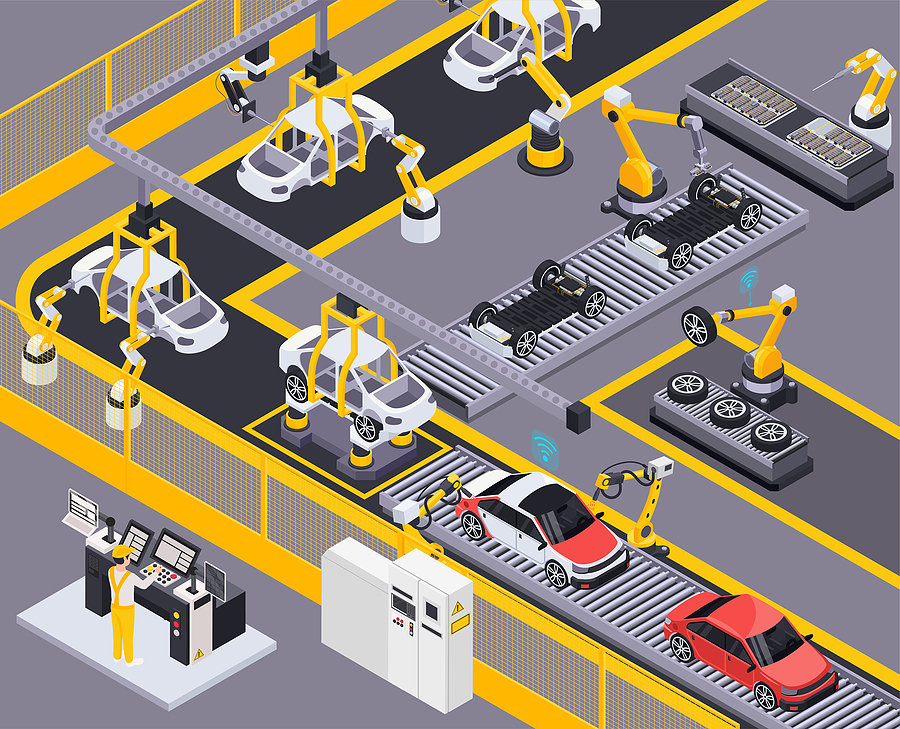
SIOP. It’s difficult to achieve careful, accurate planning for the future when the road ahead contains so many bumps. That’s why we take the usual sales and operations planning (S&OP) process to a different level by adding inventory to the mix. The goal is to look ahead, anticipating the inventory you need while also coordinating with sales, marketing, and finance to involve the entire organization in this process. A key to SIOP is using inventory as a strategic tool to help offset variation in either demand or production issues.
Predictive Maintenance. Yes, it sounds extremely basic, but we find that heading off trouble before it starts can eliminate the risk of bogging down your entire production line to fix what’s broken.
Skills Training. Investing in training is playing the long game, but in light of your best people on the line retiring and fewer people to take their place, it’s paramount. Training has advantages in addition to the obvious — your people being more skilled on the job. It also demonstrates in a very tangible way that you are committed to the growth and success of your employees. You gain loyal workers and create a pipeline for advancement. It’s a win-win.
Technology Investments. USC Consulting Group is not about coming in and asking manufacturers to invest in the latest and greatest technology in order to become more efficient. No, efficiency takes harder work than just installing a new machine. However, in some cases, it’s necessary to level up. Legacy technologies don’t have the same features and capabilities as newer models. And in the auto manufacturing industry, you’re dealing with producing an entirely new product with electric vehicles. It may be time to look at your technology and decide if it can take you into the future or keep you in the past.
Doing business in the automotive manufacturing industry is like driving a manual transmission. You are constantly shifting gears to keep pace with traffic – in this case, the consistent change of consumer demand. Operations consulting helps companies improve their processes and be prepared for what’s coming down the road. We help manufacturers become more efficient and profitable in this or any economy.
Is working with operations consultants an untraveled road for you? Please get in touch. We’d love to talk with you about it.
What’s on the road ahead for consumer goods manufacturing? Although the industry is multifaceted and varied, encompassing everything from household goods to food & beverage to apparel and more, most arms of the consumer goods industry are facing similar challenges. Supply chain woes. Geopolitical instability. Economic uncertainty paired with rising costs. Ecommerce disruption. Changing consumer preferences. Labor shortages.
A common thread running through all of those challenges: Stress. According to Deloitte’s “2023 Consumer Products Industry Outlook,” which surveyed executives at CG companies with more than $500 million in revenue, seven of 10 respondents said their job is more stressful now than it was five years ago, due to those ongoing challenges. We believe execs in many industries feel the same.
Here are some trends affecting the consumer goods manufacturing industry today:
Consumer Goods Manufacturing Trends
Challenges remain on the road ahead, but the ride is getting smoother.
Continued supply chain disruptions. No, it’s not over yet. The supply chain bottleneck that most industries faced during the pandemic has improved in some areas but has not gone away. According to a new survey by Coupa Software, 82% of supply chain leaders report bracing for continued supply chain issues in the next year. The industry is looking for ways to take the risk out of its supply chain, namely by reshoring or nearshoring supply to offset the worry about once-reliable sources. One of the wild cards in terms of supply chain is the current geopolitical instability, with the war in Ukraine lingering and tensions heating up with China and Russia.
Economic pressures. A recession is looming. (Or is it? Nobody seems to know.) Prices are rising. Inflation is through the roof. In addition to impacting consumers’ pocketbooks and spending habits, these economic factors are in league with rising costs of raw materials, transportation and labor costs to create a miasma of financial uncertainty. It has caused 80% of respondents in the Deloitte survey to report they’re raising prices further to compensate.
Labor shortages. For the consumer manufacturing industry, the labor shortage doesn’t just mean a lack of warm bodies. It also means a lack of skilled workers. The old guard is retiring, and the new generation taking its place needs the skills to operate today’s complex machinery. It means increased training and outreach from trade schools. The problem is, the numbers of young people going into the manufacturing field are dwindling just when we need them most.
Changing consumer preferences. While human behaviorists will be studying the effects of the pandemic on consumer spending for years to come, we see one thing clearly. Preferences and habits are changing. A heightened awareness of the environment is driving younger consumers toward sustainable products, and companies themselves are being held to those standards. Buyers are turning to the comfort and familiarity of known brands rather than taking risks. They are also more focused on health, having lived through a pandemic.
e-and-m-Commerce surge. This is also about consumer behavior, with a twist. The ecommerce surge that started during the pandemic is showing no signs of slowing down. According to Forbes, in 2023, ecommerce sales are projected to grow to 10.4%,with the global ecommerce market hitting $6.3 trillion. Mobile commerce (people making purchases from their smartphones) is poised to hit $415.93 billion this year. For consumer goods companies this may mean the need for a souped-up e-and-m-Commerce site for direct-to-consumer opportunities.
Proven methods for success
At USC Consulting Group, we specialize in helping companies reduce operating costs and improve efficiency… in this economy, or any economy. In our 55+ years in this business, we’ve rolled with a lot of changing tides and helped our clients do the same. We find that trends, challenges, economies and other factors can affect those tides, but tried-and-true operating methods can right the ship every time.
Two of the most powerful methods we use to help companies become more efficient and profitable are SIOP and LSS.
SIOP. Sales, Inventory & Operations Planning takes the normal sales and operations planning (S&OP) process and adds inventory to be as important of a variable and a strategic tool. Following this methodology helps manufacturers eliminate waste, increase efficiencies and achieve an optimal level between not enough and too much. It’s also an unparalleled tool for inventory management, which is a tricky business today given supply chain shortages and changing consumer preferences.
Balancing between too much inventory and too little has been the ongoing challenge after the pandemic, and SIOP can help you get there. If you would like to learn more about SIOP, download our (free) eBook, “Sales, Inventory & Operations Planning: It’s About Time.”
Lean Six Sigma. Two sides of the same coin, Lean looks at making processes more efficient and reducing lead times, while Six Sigma focuses on cutting down on defects. Both are useful goals when aiming to optimize your processes, throughput and ultimately, your bottom line. Together, Lean Six Sigma is a powerful process methodology.
But it takes years to master the balance between speed of throughput and quality of the end product. We have certified black belts in LSS on staff to guide these projects but also train your staff in the techniques. The goal is to make process improvement changes and ensure they are sustainable for years to come.
Interested in hearing more about how we can help? Give us a call and we’ll start by listening.
The COVID-era supply chain disruptions are slowly but surely easing up for manufacturers around the globe. While the worldwide market is not yet fully recovered, signs point to a strong resurgence in 2023, with a return to normalcy by 2024. Even though good news is on the horizon for manufacturers, there are still a number of challenges to be aware of that will impact day-to-day operations. Here’s an overview of a few of the top manufacturing challenges for 2023, and how to handle them.
Challenge: Legacy technologies
Many manufacturers operate with legacy technologies — outdated hardware or software systems. These outdated systems can cause disruption for an organization in a few key areas.
The first problem: Legacy technologies can cause efficiency issues. Since these systems can be years (and sometimes decades) old, they simply don’t have the same features and capabilities of newer software on the market. Additionally, these legacy systems can pose a security risk. Older technology doesn’t have the same safeguards as newer systems, and cybercriminals have a much easier time infiltrating outdated software than one that is up-to-date.
Despite these problems, manufacturers can be hesitant to change systems due to familiarity, not wanting to enact a full system overhaul, or a mix of the two.
Strategy: Invest in new technologies and smart warehouses
Investing in emerging technologies should be a priority for manufacturers heading into the new year.
It’s a wise strategy, not only to become more efficient and protect systems from infiltration, but newer technologies can increase safety in the workplace and free up employees to handle more productive tasks. A recent survey from Deloitte found that 85% of manufacturing executives think that some form of robotics on the production line could increase employee safety, and 78% agree that updated technology can minimize repetitive work, empowering employees to focus on more productive and impactful tasks.
Challenge: Inflation
Starting in mid-2022, inflation across all essential goods prompted public backlash, not to mention squeezing the wallets of consumers and businesses alike. Bearing the brunt of the blame was the global supply chain, and the bottlenecks and scarcity it caused in markets across the world. Although those pressures are easing headed into the new year, inflation will still be a factor in 2023.
Strategy: Re-evaluate costs during design
For manufacturers, inflation means more careful planning to ensure operations remain lean, mean and profitable.
One way of doing this is by implementing Design to Cost — a method in which a manufacturer combines cost management with decision-making during the design stage of a product. Rather than the normal method of thinking about costs after a rough design of a product is made, the unit and material costs are fully integrated during planning to ensure products are profitable.
This type of thinking seems to be the reality for manufacturers in 2023, as a recent Forbes survey found that 87% of manufacturing CEOs plan to increase prices in the new year. Therefore, it’s important for all manufactures to think ahead, and integrate material costs into their design process as soon as possible.
Challenge: Inventory uncertainty
Inventory uncertainty remains one of the manufacturing challenges in 2023. Despite the healing global supply chain, manufacturers still need to strike a proper balance between stockpiling inventory and buying just-in-time. Striking that balance can be tricky. Not getting it right can cause businesses to become over- or under-leveraged at a moment’s notice — affecting the bottom line in the process.
Strategy: SIOP
Sales, Inventory & Operations Planning, SIOP, takes the normal sales and operations planning process and makes inventory just as important of a variable and a strategic tool. Following this methodology helps manufacturers eliminate waste, increase efficiencies and achieve an optimal level between not enough and too much.
We recommend that the SIOP horizon be a minimum rolling 14-month period that gets updated monthly. The aim is to look ahead multiple quarters to make sure inventory is available exactly when you need it. Involving a wide range of departments such as sales, marketing, engineering and finance, SIOP is a system that involves the entire organization to ensure yearly goals and objectives are met.
If you would like to learn more about SIOP, download our (free) eBook, “Sales, Inventory & Operations Planning: It’s About Time.”
Keep moving forward
There will be manufacturing challenges in 2023 and beyond. By addressing your legacy technologies, adjusting to inflation fluxes, and taking the uncertainty out of your inventory management, you will be able to fine-tune your operations for optimal performance.
If your business could use some horsepower to power up your team on improvement initiatives, contact USC Consulting Group and we will put our over 50 years of experience to work for you.
The global supply chain is a delicate framework in which every participating business needs to stay nimble and adaptable — because, as we saw during the pandemic, one singular event can throw a wrench into the entire system. Innovation and optimization need to be top of mind.
But what qualifies as effective optimization? Given the complexity of the flow of goods, cash and information between multiple producing, storage, delivery and consuming partners, companies can easily neglect key areas, or focus too hard on others. Disruption anywhere along the supply chain line can (and does) create major headaches, stifle throughput and force manufacturers into a dance of optimizing supply and demand.
We can help with that. At USC Consulting Group, we’ve been helping companies optimize their operations for more than half a century. We’ve learned a few things along the way. Here are some important do’s and don’ts for optimizing your supply chain. It’s about helping your business through the ongoing disruption and preparing it for unforeseen events in the future.
Don’t: Use outdated systems
There’s a tendency for many businesses to take an “if it ain’t broke, don’t fix it” approach. However, just because something is working in real time doesn’t mean there aren’t improvements to be made. In today’s data-rich environment, one of those improvements involves data analytics.
Outdated inventory systems, suboptimal communications and disconnected information are some of the biggest areas that hold an organization back. The limitations of legacy technologies thwart the goal of end-to-end transparency along the line and impede rapid-response decision making. Before you know it, you can end up in a data-rich, intelligence-poor environment. It’s so common a scenario now, there’s even an acronym for it: DRIP. Aptly named, because the potential power of all of that data is dripping down the drain if you’re not equipped to use and interpret it.
Do: Use SIOP
Sales, Inventory, and Operations Planning (SIOP) is a method we use here at USC Consulting Group that emphasizes inventory as a strategic tool to allow businesses to get a better look at their operations and formulate superior strategy decisions.
SIOP takes advantage of the wealth of digital data available to business owners to gain a strategic advantage. Having the ability to capture, analyze, integrate and interpret high-quality data is the key to staying ahead of the market. The aim is to achieve process automation and glean predictive analytics, which allow you a clearer look at your operations to make better-informed decisions.
Don’t: Segregate internal planning and communications
Silos! How often do we hear about the dangers of silos in businesses? It’s the concept of departments working separately, having poor communication and perhaps duplicating or negating each other’s efforts. We like to identify it as “the left hand doesn’t know what the right hand is doing.” Any way you refer to it, segregating internal planning and decision-makers leads to trouble in your supply chain.
These systems separate workers into independent subsections with little to no visibility between external partners. These separate groups work in their own ecosystem, unable to effectively communicate with other departments or relevant groups. This not only slows an operation down, but extinguishes any potential spark of collaboration or innovation that may arise from working in conjunction with each other.
Do: Increase information flow
Uncertainty in the supply chain is caused by disconnected information. A truly effective and innovative workplace allows all relevant personnel to communicate with each other.
Internally, abandoning legacy email and phone methods of communication in favor of end-to-end, 3-way knowledge sharing and open social platforms speeds up collaboration and enhances efficiency. Externally, keeping a concurrent, continuous and completely open demand plan is essential for maintaining healthy, profitable business relationships.
Enhancing communication and information flow internally and externally is another key for staying ahead of the curve and fostering innovation for supply chain businesses.
Don’t: Test out a new system on a limited basis
There can be hesitation for a business to roll out a new system, opting instead to test it out in certain departments or methods of communication. This can be a mistake.
Without full implementation, a business never sees the full power and potential of a new system and will be quick to abandon it in favor of the legacy methods they have been operating with for years. The right system can revolutionize operations on all fronts, from internal communication to vendor relationships to future workplace innovations. Without every aspect of a business running on a new method, a business owner may never see the full payoff.
Do: Find a trusted method and go all in
While there certainly are challenges with implementing a new system, it’s important to find a trusted method and go all-in. For example, let’s look back at our SIOP system.
Different areas of a business have different roles and objectives. Sales is eternally optimistic, operations wants to know precisely what is going to be produced and shipped, purchasing makes conservative commitments to suppliers, and finance has to predict performance and cash flow. Getting everyone pushing in the same direction for a system change can be a daunting task.
We have found that SIOP works optimally if your entire enterprise uses it. If you allow a facility, business unit or a customer team to continue to operate outside of the SIOP process it will undermine your efforts. That is why it’s so important to get everyone on board for a new process to truly see the difference it can make.
At USC Consulting Group, we’re dedicated to helping our clients weather any storm, including the kind of supply chain tsunami we’ve all experienced recently. Give us a call today to talk about how we can put our expertise to work for you.

